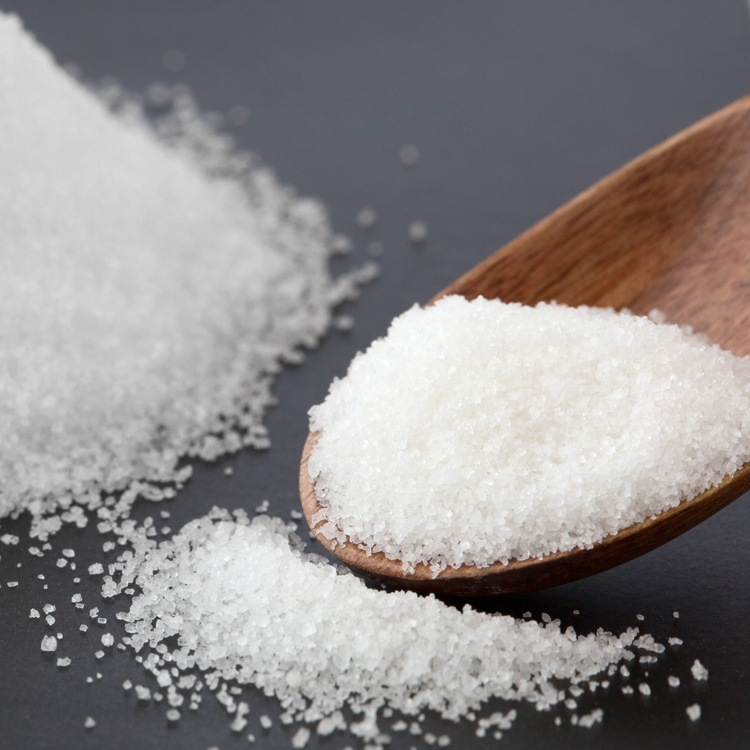Chemical fertilizers can be divided into two types, chemical acid and alkaline, and physiological and alkaline. Chemical acidity refers to the acidity and alkalinity of the fertilizer dissolved in water. According to this, the fertilizer can be divided into chemical acidic fertilizers, chemical alkaline fertilizers, chemical neutral fertilizers. Ammonium sulphate and superphosphate are soluble in water. Acidic or weakly acidic fertilizers are chemical acidic fertilizers. Ammonia, potassium carbonate, etc. are soluble in water. Alkaline or weakly alkalinous. Chemical alkaline fertilizers, urea, potassium sulphate, calcium nitrate. Neutral or nearly neutral water-soluble fertilizers are chemically neutral fertilizers.
Physiological acidity refers to the acidity and alkalinity of the soil after the fertilizer is applied to the soil and absorbed by the crop. According to this, fertilizers can be divided into physiological acidic fertilizers, alkaline fertilizers, and neutral fertilizers. Ammonium sulfate is a commonly used nitrogen fertilizer that produces ammonium and sulfate ions in the soil after application. Although both of these ions can be absorbed by plants, the absorption of ammonium ions by plants is much greater than that of sulfate. Most of the sulfate remains in the soil. The plant releases hydrogen ions at the same time as it absorbs ammonium ions, making the soil acidic, and is therefore called a physiological acidic fertilizer. The absorption of plants such as sodium nitrate and calcium nitrate causes the soil to be alkaline, which is called physiological alkaline fertilizer. Ammonium bicarbonate and urea have been shown to be neutral or nearly neutral after being absorbed by plants. They are called physiologically neutral fertilizers.
When purchasing and using chemical fertilizers, it is necessary to understand the acidity and alkalinity of chemical fertilizers so that they can be reasonably applied and improve fertilizer efficiency. Soil pH can not only directly affect the dissolution and sedimentation of nutrients in soil, but also affect the activity of microorganisms and indirectly affect the effectiveness of soil nutrients. In acid soils, soluble phosphorus easily combines with iron and aluminum to form iron phosphate and aluminum, which reduces effectiveness. Exchangeable potassium, calcium, magnesium and other nutrients in the soil are easily replaced by hydrogen ions. Once they encounter rainwater, they will be lost. Acidic soils also often lack sulfur and molybdenum. Therefore, acidic soil should use alkaline or physiological alkaline fertilizers, such as calcium nitrate, ammonia, ammonium bicarbonate, calcium magnesium phosphate fertilizer. In this way, the soil will not continue to be acidified, and the activity of sulfur, molybdenum and other nutrients will also be improved, otherwise it will reduce the effectiveness of phosphate fertilizer and cause the loss of potassium, calcium, magnesium and other nutrients. In alkaline soils, especially in calcareous soils, soluble phosphorus is easily combined with calcium to form insoluble calcium phosphate salts, which will reduce the availability of phosphorus. Many trace elements such as boron, manganese, molybdenum, zinc, and iron are effective. Sexuality will also be greatly reduced, resulting in inadequate nutrient elements and various physiological diseases in the crops. Therefore, in the calcareous or alkaline soils, acidic and physiological acidic fertilizers such as calcium superphosphate, ammonium sulfate, and ammonium chloride should be selected to increase the acidity of the soil, so that phosphorus is not easily combined with calcium to form insoluble calcium phosphate salts. The availability of phosphorus can also increase the effectiveness of boron, manganese, molybdenum, zinc, iron, and copper. Conversely, if acidic fertilizers are applied to acidic soils for a long time, the soils will be acidified, plated, and depleted, whereas in calcareous or alkaline soils, alkaline or physiological alkaline fertilizers will cause secondary salts of soil. Alkalization, structural deterioration, and fertility degradation.

Natural Field strives to develop low toxicity and environmentally friendly agricultural raw materials. They are popular in Europe and North America. We are proud of us: 5-ala, Physcion, Genistein and Triacontanol. Etc.
We're well-known as one of the leading agricultural raw materials manufacturers and suppliers for our quality products and good service. Please feel free to buy or wholesale bulk agricultural raw materials for sale at the best price from our factory.Main products:
1. 5-ala: 5-ALA (CAS: 5451-09-2) is suitable for a wide range of scientific fields, such as increasing harvest yield or increasing plant green. Supplementary studies from animal cultures of microorganisms or cells related to reactive oxygen species produced from the accumulation of excess porphyrins are used for photodynamic diagnosis of cancer research.
2. Garlic Extract Allicin: allicin has a strong odor and spicy taste, and has immune and anti-fatigue functions. As a restorative herb, garlic can play an important role in balancing stressful life and tired body. In the veterinary field, it can treat respiratory infections and digestive diseases in poultry and livestock.
3. Sophora flavescens Extract: Matrine is an alkaloid extracted from the roots, stems and fruits of the leguminous plant Sophora flavescens by an organic solvent such as ethanol, and belongs to the class of quinolocilidine derivatives lupin alkaloids. Matrine has various pharmacological effects such as antibacterial, antiasthmatic, and white blood cells.
Pesticides Growth Regulator,Agriculture Raw Material,Agricultural Raw Materials,Agricultural Raw Ingredients
Xi'an Natural Field Bio-Technique Co., Ltd. , https://www.naturalnf.com